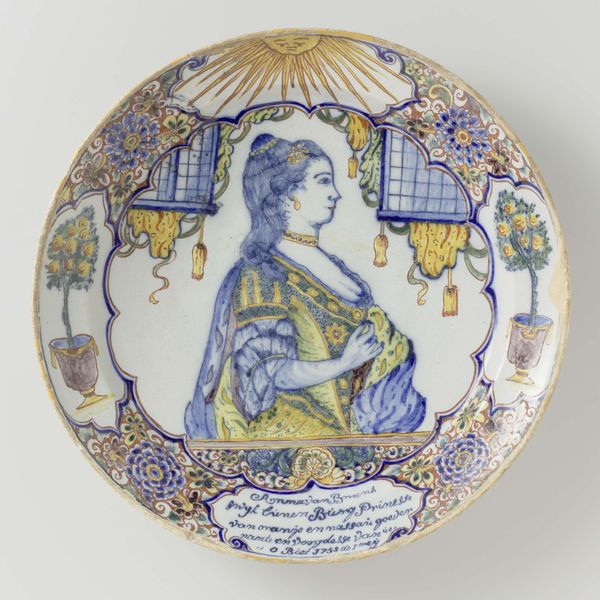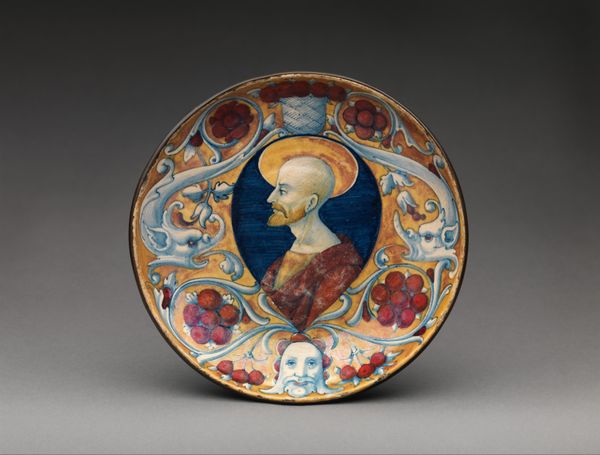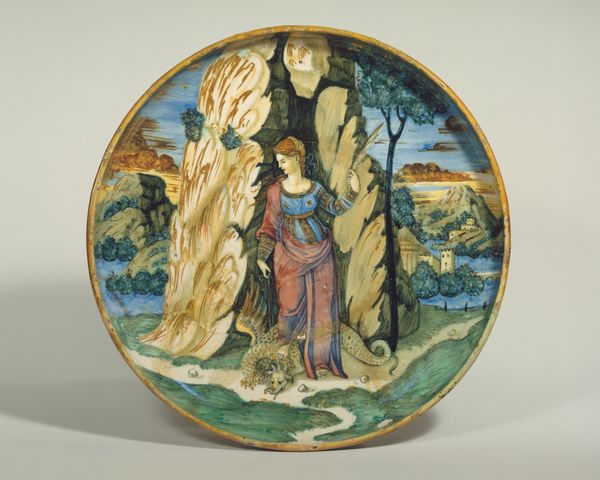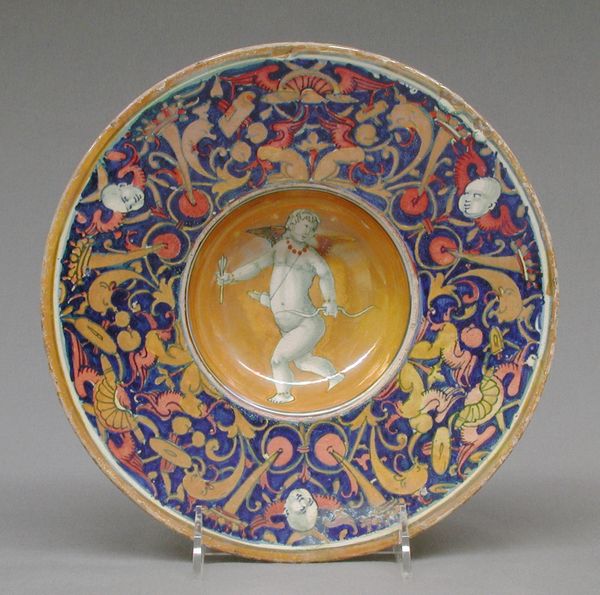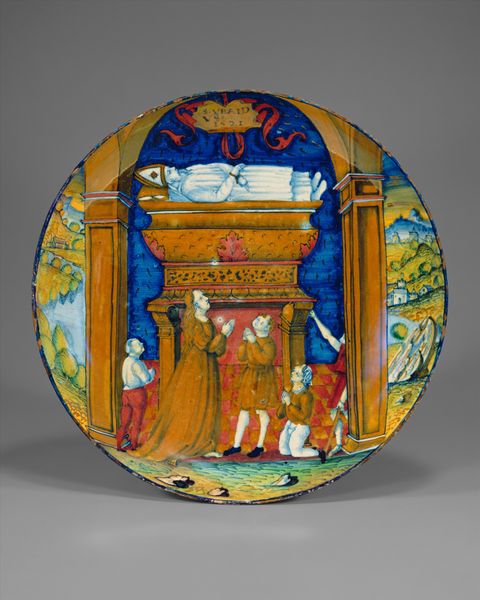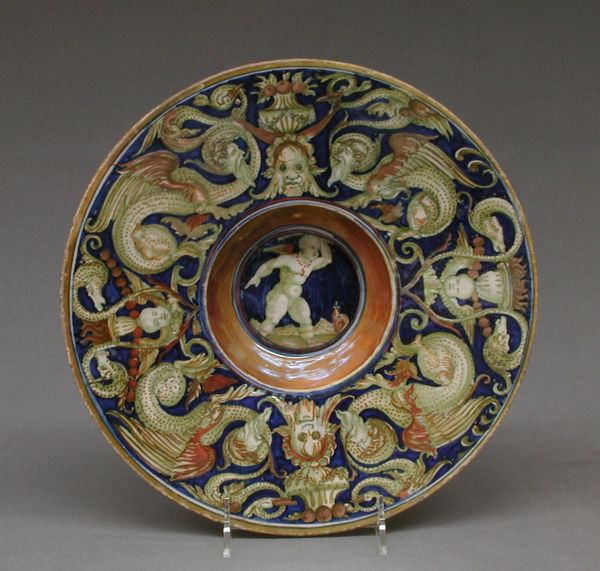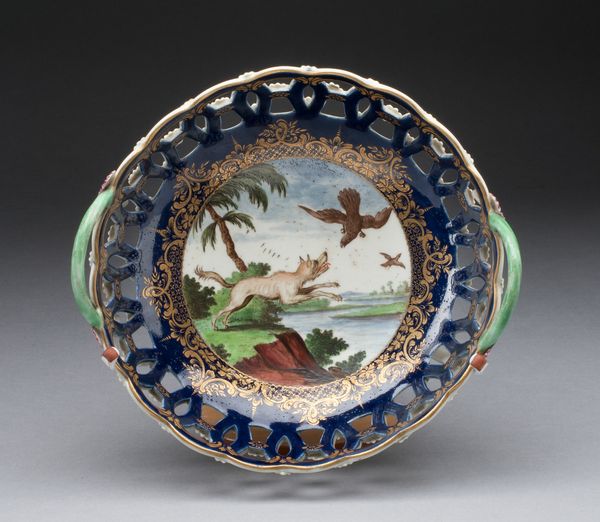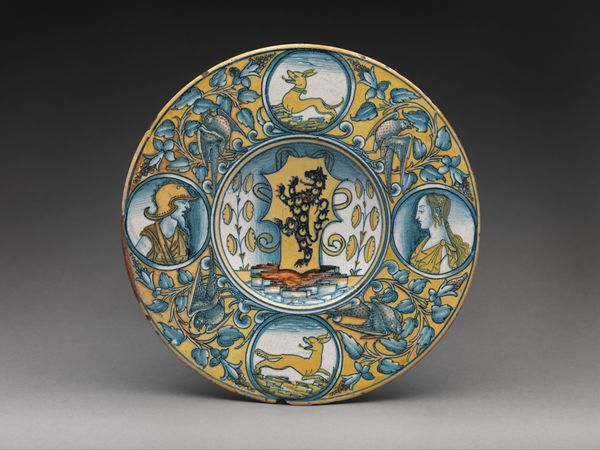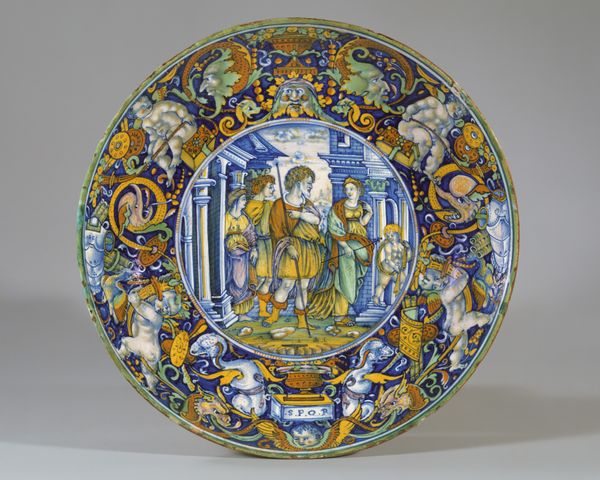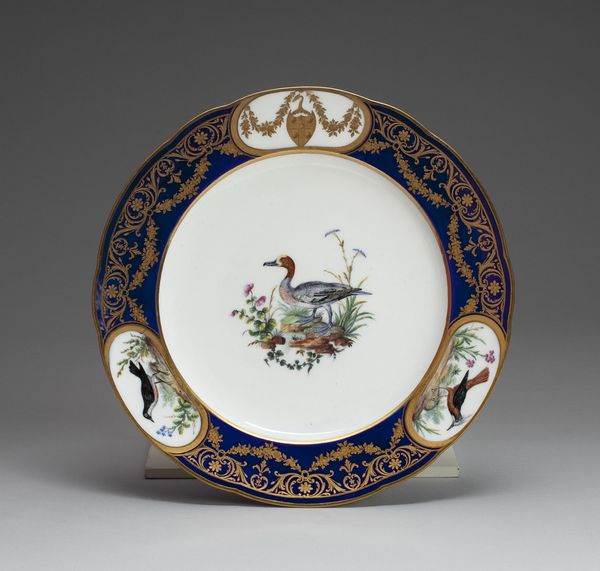
ceramic, earthenware
#
portrait
#
pottery
#
ceramic
#
11_renaissance
#
earthenware
#
stoneware
#
ceramic
#
men
#
earthenware
#
watercolour illustration
#
italian-renaissance
#
profile
Dimensions: Diameter: 8 1/4 in. (20.9 cm)
Copyright: Public Domain
This lusterware dish was crafted by Maestro Giorgio Andreoli in Italy during the early 16th century. A young woman in profile is framed by potent symbols: dolphins, wings, and quivers of arrows. The dolphin, often linked to Aphrodite, embodies love and swiftness, recurring across millennia from ancient Greece to Roman mosaics. The wings evoke Mercury, a messenger between worlds, suggesting ethereal communication. The quiver, filled with arrows, symbolizes Cupid's darts of desire. These aren't mere decorations; they are visual echoes, reverberating with collective memories of love and transformation. Consider how similar motifs emerge in Botticelli's "Birth of Venus," where dolphins accompany the goddess, and winged figures attend the scene. The emotional power lies in how these symbols tap into our subconscious. They bypass our conscious understanding, directly engaging with deeply rooted cultural narratives. They point to the cyclical nature of symbols, which are never truly new, but constantly reborn, carrying the weight of history while adapting to each new cultural landscape.
Comments
No comments
Be the first to comment and join the conversation on the ultimate creative platform.
